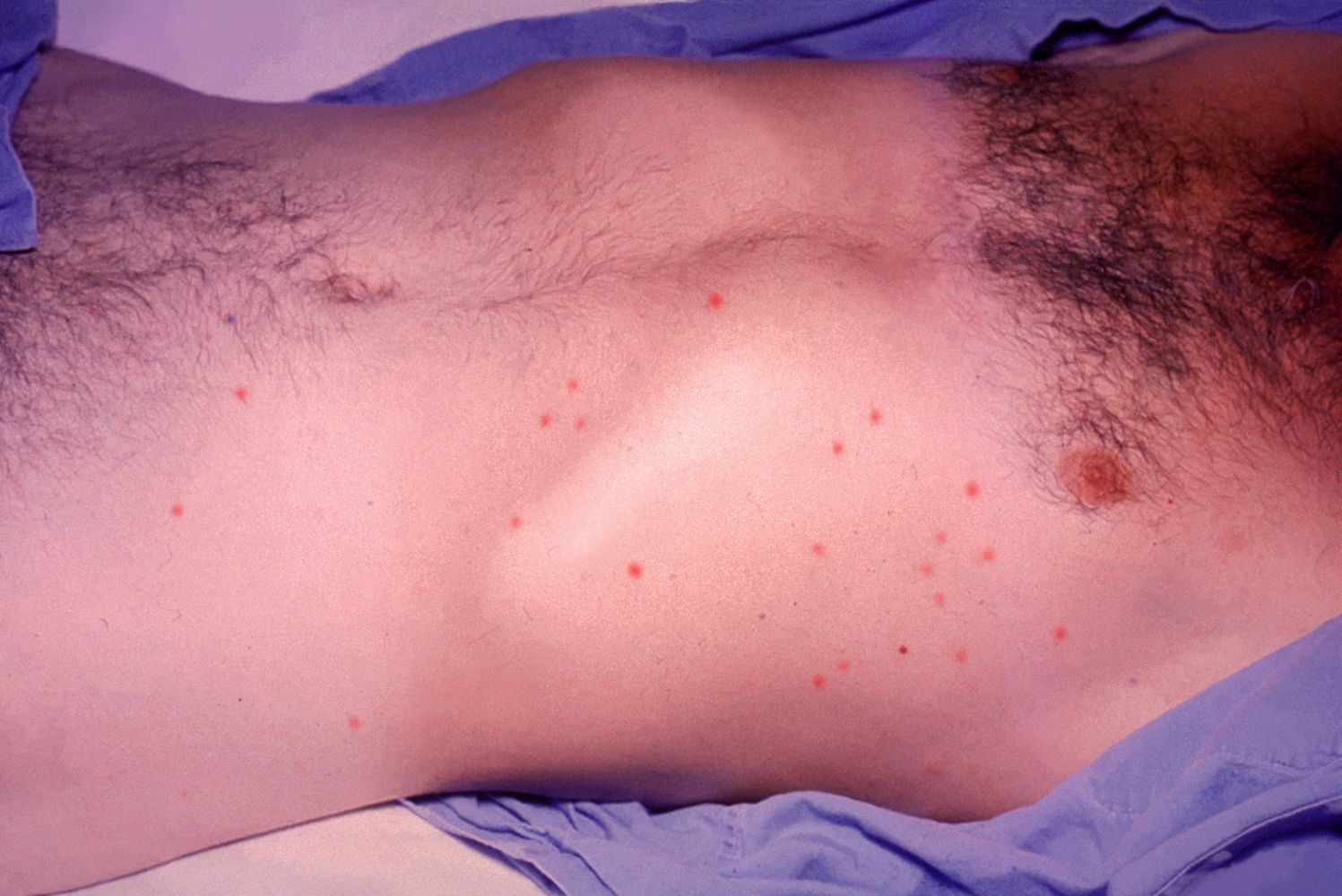Typhoid and paratyphoid fever
Epidemiology
Etiology
- Pathogen
- Salmonella enterica serotype Typhi: typhoid fever
- Gram-negative rod
- Facultative anaerobe with peritrichous flagella
- Produces hydrogen sulfide (H2S) on TSI agar
- Oxidase-negative
- Cannot ferment lactose
- Salmonella enterica serotype Paratyphi: paratyphoid fever
- Salmonella enterica serotype Typhi: typhoid fever
- Reservoir
- Salmonella enterica serotype Typhi: humans
- Other Salmonella species: humans and animals
- Transmission: fecal-oral
Pathophysiology
Lifecycle
- Oral uptake of pathogen: A relatively large number of organisms (∼ 105) is needed to cause infection (high infective dose), unlike, e.g., in Shigella infection, where as few as ∼ 10 organisms suffice to infect the host.
- Migration into the Peyer patches of the distal ileum: If the pathogen manages to reach the distal ileum, it migrates via M cells through the epithelium and into the Peyer patches.
- Infection of macrophages → nonspecific symptoms
- Spread from macrophages to the bloodstream → septicemia → systemic disease
- Migration back to intestine → excretion in feces
Clinical features
Tip
Key features:
- "Rose spots" (faint, salmon-colored macules on the trunk and abdomen)
- Relative bradycardia (pulse-temperature dissociation), where the pulse is slower than expected for the degree of fever.
Week 1
- Body temperature rises gradually.
- Relative bradycardia (not seen in children)
- Physiologically, the heart rate increases in proportion to body temperature (for every degree Fahrenheit, the heart rate should increase ∼ 10 beats/min). In typhoid fever, this physiological response is typically reduced. Thus, the heart rate is only moderately increased despite a high fever, which is known as relative bradycardia.
- The Salmonella typhi bacteria releases endotoxins that affect the autonomic nervous system, specifically dampening the sympathetic response that would normally increase heart rate with fever.
- Constipation or diarrhea
Week 2
- Persistent fever, but no chills; mostly unresponsive to antipyretics
- The lack of chills is interesting and relates to how the fever develops:
- In most infections, bacteria multiply in the bloodstream, causing sudden spikes in endotoxin levels that trigger rapid temperature increases (accompanied by chills)
- In typhoid, because the bacteria live inside cells and release endotoxins gradually, there isn't the sudden change in temperature that would cause chills
- The lack of chills is interesting and relates to how the fever develops:
- Rose-colored spots: a faint, salmon-colored exanthem that appears on the lower chest and abdomen (most commonly around the navel) in approx. 30% of affected individuals

- Nonspecific abdominal pain and headache
- Yellow-green diarrhea, comparable to pea soup (caused by purulent, bloody necrosis of the Peyer patches), or obstipation and bowel obstruction (as a result of swollen Peyer patches in the ileum)
- Neurological symptoms (delirium, coma)
Week 3
- Clinical features of week 2
- Additional possible complications include:
- Gastrointestinal ulceration with bleeding and perforation
- The pathogen induces necrotic intestinal inflammation (especially in the Peyer patches), which may result in a severe disease course with intestinal rupture and fecal peritonitis.
- Hepatosplenomegaly
- In rare cases: sepsis, meningitis, myocarditis, and renal failure
- Gastrointestinal ulceration with bleeding and perforation